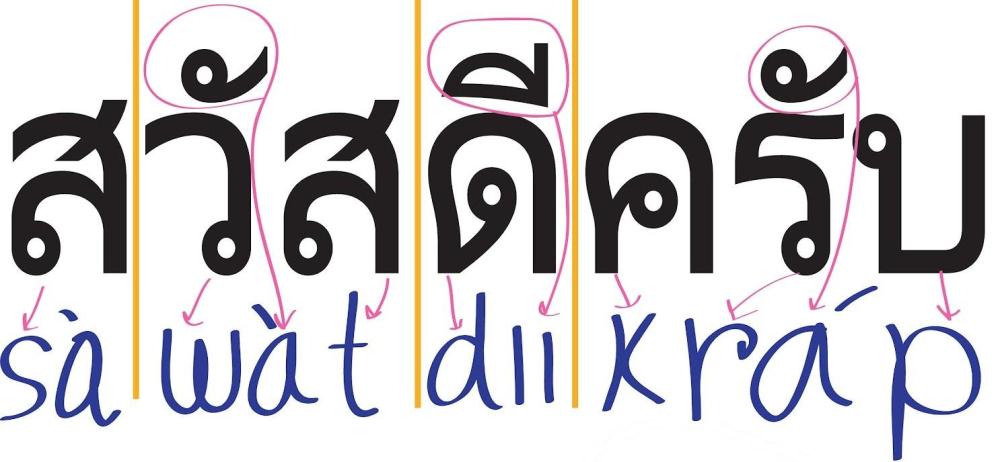
November 3, 2017 – I’m churning out these posts pretty quick right? So much to update!
I’ve heard before that many people enjoyed the program I’m currently in, but one thing they often regret is not learning more Thai. Well that’s one regret I won’t stand to have. We had a crash course, four days of the basics from hello, to shopping terms, food, numbers, and grammatical structure. Tones scare people along with the 42 consonants and 30 something vowels which can go left, right, above, below or stacked on top of other vowels; however, we avoided the actual characters that appear so foreign to us and opted for English transliteration.
There are five tones in Thai: mid, high, rising, falling, and low. On my online program the tones were divided by numbers 1 – low, 2 – falling, 3 – high, 4 – rising, and mid tone has no number (for ex: krap3 means you say the word with a high tone). In orientation, using accent marks actually taught the tones easily. The accent mark on kráp is slanted upward which tells you the tone is rising. No accent mark is mid tone. Kawpkoon (in my way kawp1koon) starts with a low tone then goes to a middle tone. So combining the words (kawpkoon kráp – polite thank you for males) makes the language seem like a puzzle, which is quite fun to put together after you get down the essentials. Mái at the end of every sentence creates a question, nouns (as they’re presented) double as singular and plural forms, while the words am, is, are, was, and were do not exist. It’s a language where you fill in the blanks based off the questions being asked and answered.
What makes it better is that for formality, you add kráp/kà (male/female) at the end of every sentence and say pom/chân (I male/female) for a subject at the beginning of the sentence; however, to speak quicker and make things easier, you can completely cut out such unnecessary words since I and the listener already know that I’m the one speaking and it’s he/she I’m addressing. For example, we would ask someone, “Do you want chicken?” and be answered, “Yes I would like some chicken.” In Thai, “Ao gai mái?” then, “Gai.” Which literally translates to, “Want chicken?” “Chicken.” To answer with the noun one used in a question is the equivalent of saying yes, and it they don’t have chicken, then they’d say “no chicken.”

The path to understanding is long and steep, but I think I got this.
Needless to say, I’m fascinated at how this language is presented. One word can change all of what you say as it can be very versatile, however adding in tones is crucial because saying mai (high tone) vs mai (falling tone) is the difference between asking a question and saying no.
Of course, Thailand doesn’t have transliterated script just lying around so we’re talking about just speaking the language at the moment. Learning the actual script of the language would take some time. I’ve gotten down how to write each symbol and vowel, but sounds and putting them together is the part I need to practice. Transliteration can be a crutch for a while, but can’t be used forever.
Here’s a sentence that’s basic:
พูดภาษาอังกฤษ? – (puut2 paasaa4 anggrit1 daai2 mai3) = Can you speak English?
For speaking, it’s not hard to get the transliteration down and say it, but looking hard at the actual letters can be mind boggling. I’m lucky to have taken Arabic which looks quite foreign itself. The orientation teacher also said that if you listen to music and can differentiate different pitches, then the language also becomes easier. As when speed comes into play, the tones blend so much you have to adjust to catch which are being used.
So! I shall see how I progress, what I’ve practiced I’ve gotten good feedback on. And I must say, over every language I’ve learned and can think of, this is the only one I’d be fine trying out with locals as they’re quite patient and pleased to see a farang try.